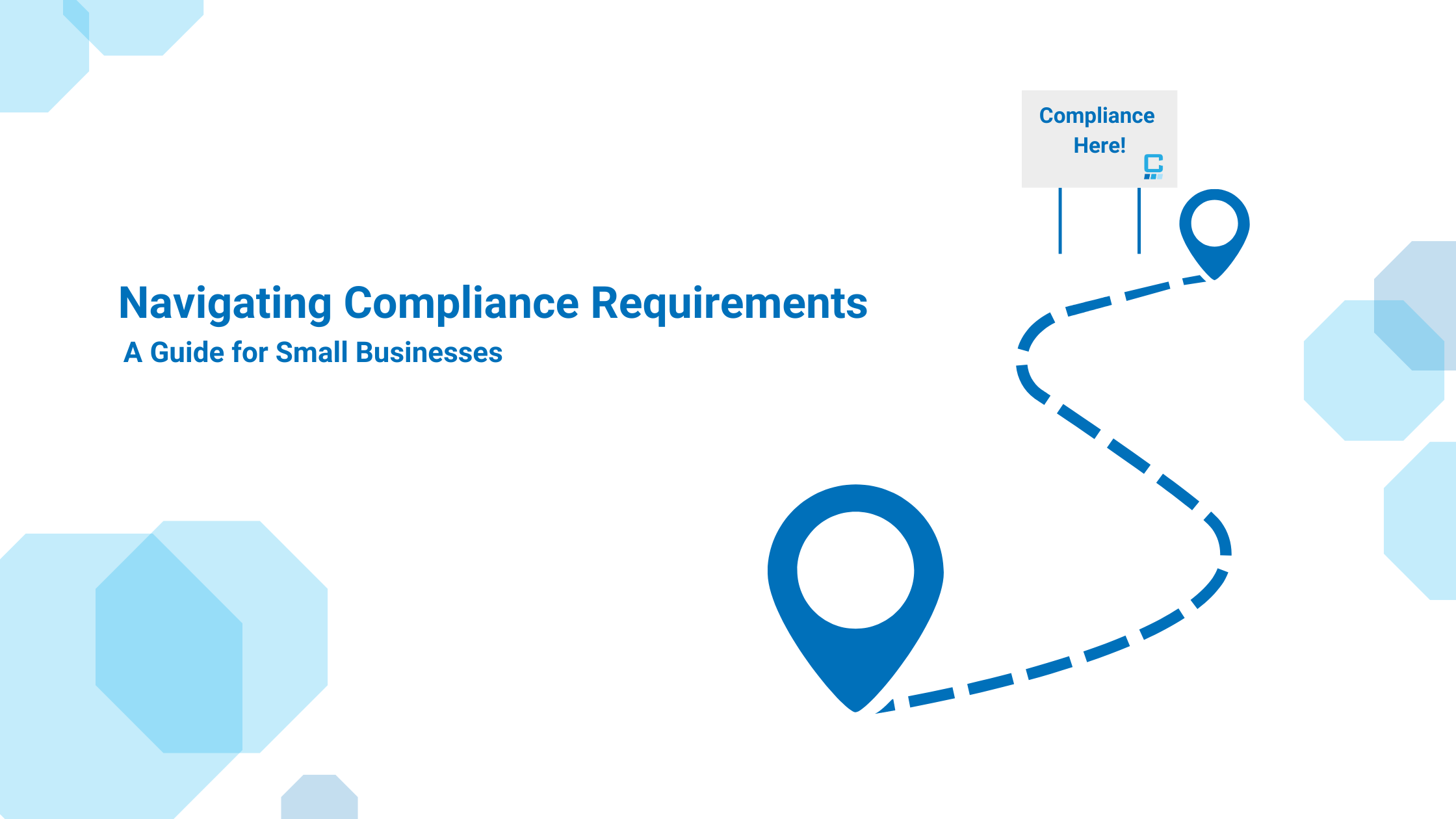
Introduction
Ensuring IT compliance and robust cybersecurity measures is crucial for businesses of all sizes. However, small businesses often face unique challenges when it comes to navigating the complex landscape of compliance requirements. This guide aims to provide small businesses with a clear roadmap to achieve IT compliance and enhance their cybersecurity posture, highlighting the importance of managed IT services in this journey.
Understanding IT Compliance
IT compliance involves adhering to laws, regulations, standards, and guidelines relevant to your industry. These requirements are designed to protect sensitive information, ensure data privacy, and maintain the integrity of IT systems. For small businesses, staying compliant is not only a legal obligation but also a vital component of building trust with customers and partners.
Key Compliance Regulations for Small Businesses:
General Data Protection Regulation (GDPR)- Applies to businesses handling personal data of EU citizens.
- Requires stringent data protection measures and grants individuals control over their personal data.
- Applies to healthcare providers and entities handling protected health information (PHI).
- Mandates secure handling of PHI to protect patient privacy.
- Applies to businesses that process, store, or transmit credit card information.
- Ensures the secure handling of payment card data to prevent fraud.
Steps to Achieve IT Compliance
- Identify Relevant Regulations
The first step is to identify which regulations apply to your business. This depends on factors such as your industry, location, and the type of data you handle. Understanding your regulatory landscape is crucial for developing a compliance strategy.
- Conduct a Risk Assessment
Perform a thorough risk assessment to identify potential vulnerabilities in your IT systems and processes. This assessment should evaluate the likelihood and impact of various threats, helping you prioritize areas that require immediate attention.
- Identify Assets: List all IT assets, including hardware, software, and data.
- Assess Threats: Determine potential threats to these assets, such as cyberattacks, data breaches, and system failures.
- Evaluate Risks: Analyze the impact and likelihood of each threat to prioritize mitigation efforts.
- Develop a Compliance Plan
Create a detailed compliance plan outlining the steps required to meet regulatory requirements. This plan should include specific actions, timelines, and responsibilities.
- Policy Development: Establish and document policies and procedures that align with regulatory requirements.
- Training Programs: Implement regular training programs to ensure employees understand compliance obligations and best practices.
- Technical Controls: Deploy technical controls, such as encryption, access controls, and intrusion detection systems, to protect sensitive data.
- Implement Security Measures
Deploy robust security measures to protect your IT infrastructure and data. This includes both preventive measures to stop threats and reactive measures to respond to incidents.
- Firewalls and Antivirus Software: Implement firewalls and antivirus software to defend against malware and unauthorized access.
- Multi-Factor Authentication (MFA): Use MFA to add an extra layer of security to user accounts.
- Data Encryption: Encrypt sensitive data both at rest and in transit to prevent unauthorized access.
- Monitor and Audit Regularly
Continuous monitoring and regular audits are essential to ensure ongoing compliance and identify potential issues before they become significant problems.
- Continuous Monitoring: Use monitoring tools to keep an eye on network activity and detect anomalies.
- Regular Audits: Conduct internal and external audits to assess compliance with policies and regulations.
- Incident Response: Develop and test an incident response plan to quickly address and mitigate security breaches.
Enhancing Cybersecurity for Small Businesses
- Employee Training and Awareness
Human error is a leading cause of security breaches. Regular cybersecurity training for employees is crucial to minimize risks.
- Phishing Awareness: Train employees to recognize and avoid phishing attempts.
- Secure Practices: Educate employees on secure practices, such as creating strong passwords and avoiding suspicious links.
- Leveraging Managed IT Services
Managed IT services can provide small businesses with the expertise and resources needed to maintain IT compliance and cybersecurity.
- Expert Guidance: Managed service providers (MSPs) like Charles IT offer expert guidance on compliance requirements and best practices.
- Proactive Monitoring: MSPs provide continuous monitoring and proactive threat detection to keep your systems secure.
- Cost-Effective Solutions: Outsourcing IT services can be more cost-effective than maintaining an in-house IT team, especially for small businesses.
- Implementing Advanced Security Solutions
Invest in advanced security solutions to protect your business from evolving cyber threats.
- Endpoint Protection: Use endpoint protection solutions to secure all devices connected to your network.
- Cloud Security: Implement managed cloud security services to protect data stored and processed in the cloud.
- Data Backup and Recovery: Ensure regular data backups and develop a disaster recovery plan to minimize downtime and data loss.
Conclusion
Navigating compliance requirements can be challenging for small businesses, but it is essential for protecting sensitive data and maintaining trust with customers and partners. By understanding relevant regulations, conducting risk assessments, implementing robust security measures, and leveraging managed IT services, small businesses can achieve IT compliance and enhance their cybersecurity posture.
Charles IT is dedicated to helping small businesses navigate the complexities of IT compliance and cybersecurity. With our managed IT services, we provide the expertise, tools, and support needed to keep your business secure and compliant. Contact us today to learn how we can help you achieve and maintain IT compliance in this dynamic digital landscape.

.png)

